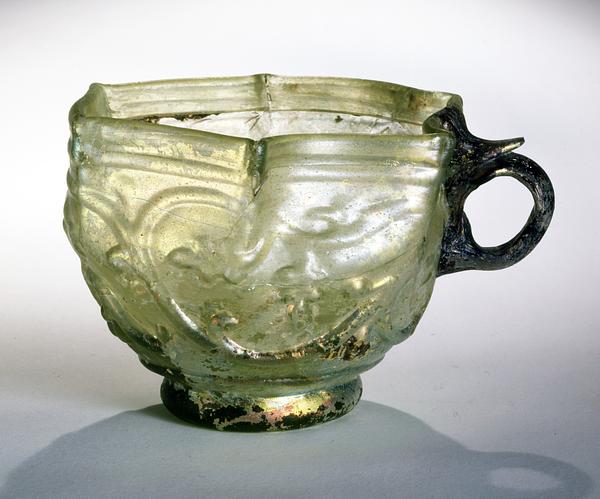Cup, yellowish-green and aubergine-colored glass, partly blown in a mold
Iran; 12th-13th century or earlier?
H: 9.5; Diam: 15 cm
The Romans developed several glass-making techniques, including blowing glass in a mold, transferring its decoration to the glass in the process. The decoration was less sharp than that found on cut glass, but blowing in a mold was much cheaper. The cup’s grapevines were formed in the mold, after which work continued on the hot glass. The upper rim was folded and then pinched in six places. The grapevine is a motif that was adopted from the Classical tradition and was used in many contexts. Its use here might, however, indicate that the cup was used for wine, perhaps of the same deep color as that of the handle and foot.
The shape of the cup and quite masterful execution indicate that it should be attributed to Iran in the 12th-13th century, but an earlier date cannot be excluded.
Inv. no. 51/2004
Published in:
Sheila S. Blair and Jonathan M. Bloom (eds.): Cosmophilia. Islamic Art from the David Collection, Copenhagen, McMullen Museum of Art, Boston College, Boston 2006, cat.no. 72;
